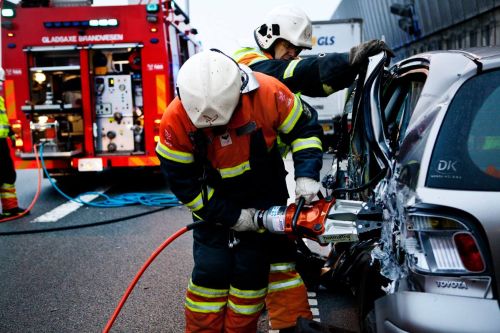Techniques – Do it your own way!
As you can imagine I do a lot of training sessions, demonstrations and seminars. At all of these events I will, at some point, get an extrication tool in my hand and do something to a car. It can be as simple as a door removal or something more complex such as B pillar rip or dashboard relocation. Before very long I am often faced with questions which start with “Why don’t you do it like this………?”
At this point, before I start, I ALWAYS make it clear that my method is not the best technique, the fastesttechnique or necessarily the most efficient technique. It is simply one that works best, quickly and efficientlyfor me, the vast majorityof the time.
Considerations
The methods I choose to complete such tasks are based on a few simple considerations:
- Is it safe and casualty centred?
- A rapid assessment of the vehicle and its construction
- My historical percentage success rate using a particular method
1. Safe and Casualty Centred
This may seem very obvious, but we must remember that when we adopt a technique, it should be safe and as casualty focussed as possible. An example of this is roof flap versus roof removal. Flapping a roof means you do not need to cut a laminated screen; less dust equals safer environment. Both are excellent techniques and neither is wrong but if both are possible what should you choose?
2. Vehicle Assessment
The anatomy of the vehicle I am faced with will guide my preferred technique. For example, a 2-door coupé type vehicle will (usually) have longer doors. This means that the distance between the dashboard and the B pillar will be larger than a 4 door vehicle. This may lead me to prefer a dash lift rather than a dash roll (due to ram length). Of course this is fine in training, but in a real event a dash roll may be your choice due to location of the patient.
3. My Historical Percentage Success Rate
My method of removing a door is by spreading hinges only. If the construction starts to tear (especially on older vehicles) then that is the point where I will introduce the cutter. There are several reasons why I teach this method, but the principle one is that I have a high success rate (85-90%) based on 20 years experience. If my success rate using this method was more like 30% I would simply find another way.
No right or wrong
I cannot emphasise enough that I do not think my methods of extrication and the techniques I teach are better than anyone else’s; they are not. They are simply methods that work for me. There is no such thing as an incorrect technique. The only caveat I will add to that statement is if I feel something is hazardous to rescuer or patient I will offer an alternative. Conversely if someone suggests an alternative technique to me then I will consider adopting it based on its merits.

The best technique is the one YOU choose and become proficient at.
Picture courtesey of Charlotte Elgaard, CEC Fotografi.
Conclusion
In short, there is no right or wrong or 100% absolute in rescue operations. We all have our own preferred way and anything we teach can only ever be considered a viable option. Let’s face it: the more options we have, the better we are!
As ever I welcome your comments...
Ian Dunbar